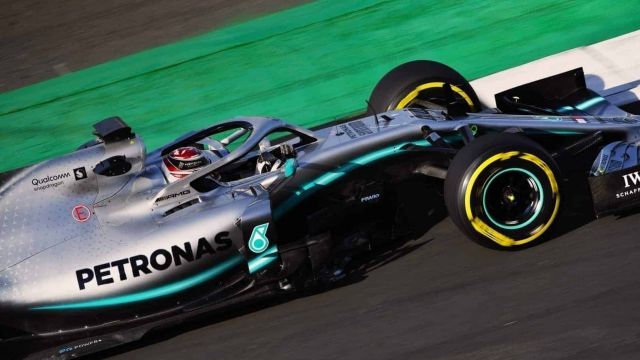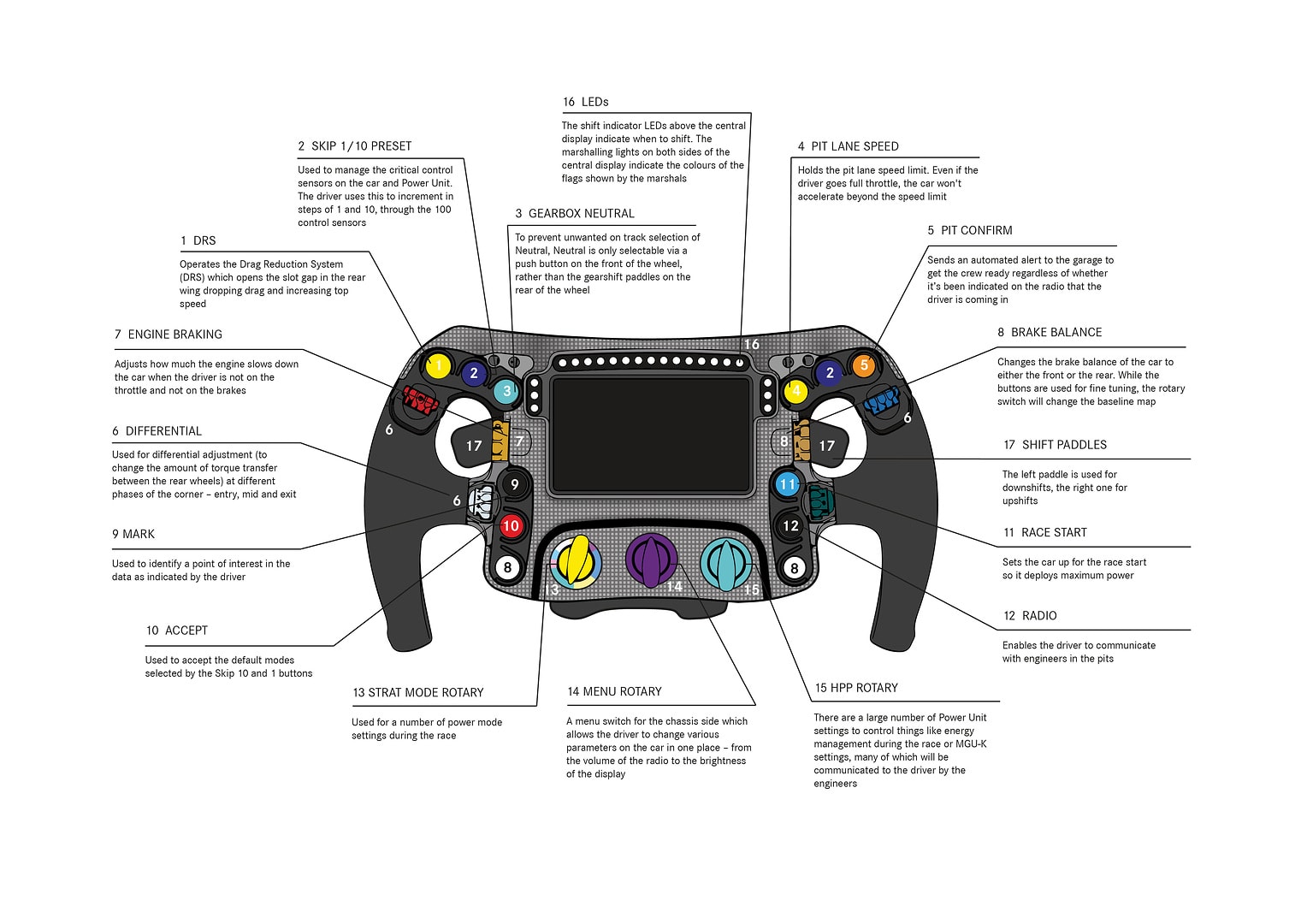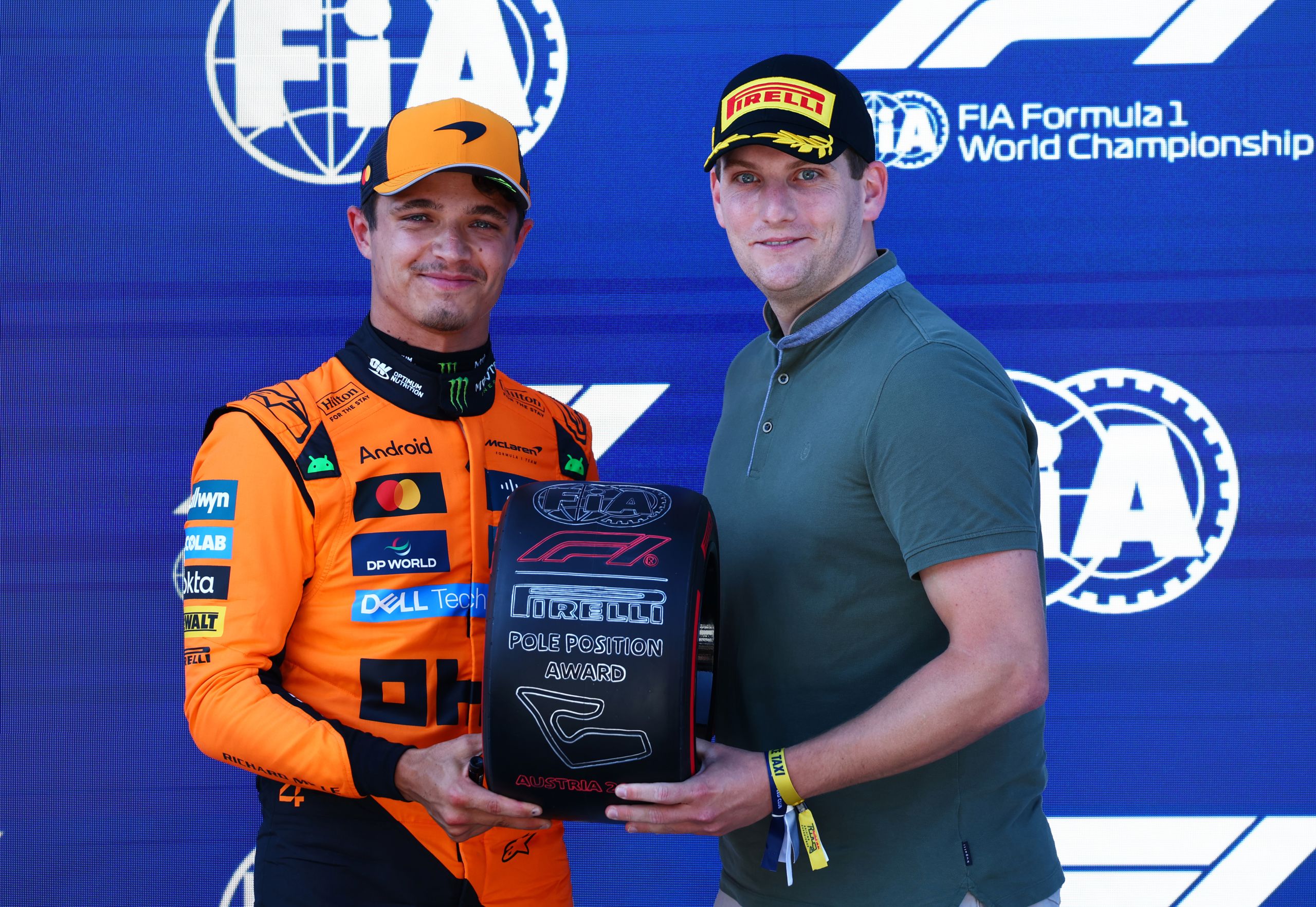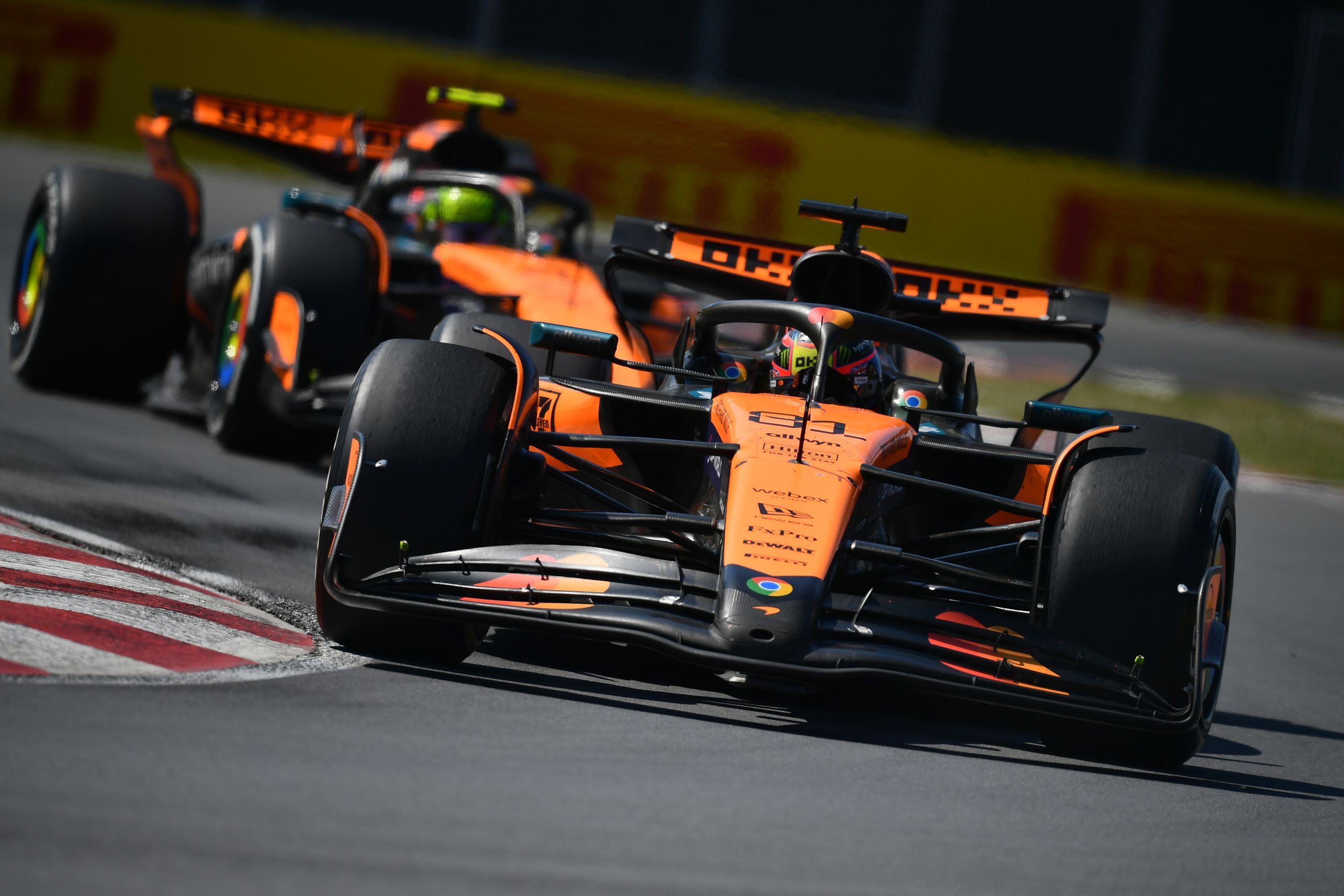How Does A Formula 1 Steering Wheel Work?


If you’ve ever wondered how a Formula 1 steering wheel works, you’re in for a fascinating exploration of cutting-edge technology and driver interaction. A Formula 1 steering wheel is the command centre of an F1 car, far more complex than anything you’d find in a standard road vehicle. It’s equipped with an array of buttons, dials, and displays, each designed for quick adjustments and real-time data feedback.
The steering wheel allows drivers to alter the car’s settings for optimal performance, manage strategies during the race, and communicate with their team, all without taking their hands off the wheel. For instance, drivers can adjust the brake balance, change on-screen data displays, and even control the differential settings to adapt to varying track conditions and performance needs. With every element tailored to the driver’s preferences, the F1 steering wheel is a critical interface that can make the difference between winning and losing.
Formula 1 Steering Wheel Explained
The F1 steering wheel is a critical component of the car, and it is an essential tool that enables drivers to control the vehicle’s various functions, including the gearbox, clutch, and other settings that are vital to success on the track. In this article, we will explain how an F1 steering wheel works, and we will provide detailed insights into its various components.
The Function of an F1 Steering Wheel
An F1 steering wheel is designed to enable the driver to control the car’s various systems and settings without removing their hands from the wheel. It is a complex device that features dozens of buttons, knobs, rotary dials, menus, displays, and LEDs that are arranged in a way that allows the driver to access them quickly and efficiently. The steering wheel is connected to the car’s onboard computer, which processes the inputs from the driver and translates them into actions on the vehicle.
The Key Components of an F1 Steering Wheel
An F1 steering wheel is made up of several components, each of which performs a specific function. Here are some of the most critical components of an F1 steering wheel:
- LCD Screen: An F1 steering wheel typically features an LCD screen that displays critical information to the driver, including their lap times, fuel levels, and other critical metrics.
- Gearshift Paddles: F1 cars feature a sequential gearbox that is operated via gearshift paddles located on the steering wheel. The paddles enable the driver to shift up or down gears quickly and efficiently, without having to remove their hands from the wheel.
- Brake Bias: F1 drivers can adjust the brake bias on their cars using a rotary dial on the steering wheel. This setting allows the driver to control the balance between the front and rear brakes, which can have a significant impact on the car’s handling.
- Clutch: F1 cars feature a clutch that is used for starting the car and for gear changes. The clutch is operated via a button on the steering wheel, and it is only used during the start of the race and when leaving the pit lane.
- Engine Modes: F1 drivers can adjust their car’s engine modes using a rotary dial on the steering wheel. These modes control the power output of the engine, and they are adjusted according to the track conditions and the driver’s strategy.
- DRS: The Drag Reduction System (DRS) is a feature that is designed to increase the car’s speed on long straights. It is activated via a button on the steering wheel, and it opens a flap on the rear wing that reduces drag and increases speed.
- Radio: F1 drivers can communicate with their team using a radio system that is integrated into the steering wheel. The driver can speak to the team using a button on the wheel, and they can also receive instructions from the team via the same system.
Formula 1 Steering Wheel Infographic
The below Formula 1 steering wheel infographic goes into greater detail, and was supplied by the Mercedes AMG Petronas team.

Formula 1 Steering Wheel Buttons
While the specific configuration of buttons can vary between different Formula 1 teams and car models, here’s a comprehensive list of common buttons and dials that might be found on a Formula 1 steering wheel:
- DRS (Drag Reduction System): Activates the DRS for a speed boost in designated zones when within one second of the car in front.
- Pit Limiter: Engages a speed limiter to comply with pit lane speed restrictions.
- Neutral: Puts the car in neutral gear, often used when stopped or to quickly disengage power.
- Radio: Opens the line of communication between the driver and their team.
- Multi-Function Switch: A rotary dial that adjusts various car parameters like engine mapping and energy recovery.
- Brake Balance: Shifts the brake force distribution between the front and rear wheels.
- KERS/ERS: Manages the energy recovery systems for additional power.
- Differential Adjustments: Changes the differential settings for better cornering.
- Tyre Switch: Informs the car’s systems about a change in tire compound.
- Fuel Mix: Adjusts the fuel-to-air ratio in the engine to manage fuel consumption.
- Tyre Pressure: Monitors and adjusts the tire pressure settings.
- Clutch Paddle: Engaged during starts or gear changes, typically located on the reverse side of the wheel.
- Gear Shift Paddles: Upshift and downshift paddles are located behind the steering wheel for quick gear changes.
- Box: Indicates to the team that the driver will be pitting on that lap.
- Start Mode: Configures the car settings for optimal performance during race starts.
- Energy Harvest: Controls the amount of energy being harvested during braking.
- Bias Adjust: Alters the electronic brake force distribution.
- Acknowledge Button: Used to confirm receipt of information or to clear fault messages on the display.
- Display Mode: Cycles through different data screens on the steering wheel’s display.
- Wet Mode: Adjusts car settings to suit wet weather conditions.
- Drink Button: Allows the driver to take a drink from an on-board fluid system.
- SOS Button: Used in emergencies to signal distress.
- Track Map: Helps the driver to select engine maps and other settings specific to certain parts of the track.
It’s important to note that the actual buttons and their functions can be customised to suit each driver’s preferences and the specific technical aspects of their car. The above list is indicative and not exhaustive; the actual steering wheel used by a driver may have a different configuration or additional bespoke functions.
Formula 1 Steering Wheel Q&A
How many buttons and switches does an F1 steering wheel have and what do they do?
An F1 steering wheel has a total of 25 buttons and switches and, of course, the clutch and the shift paddles. Five of those buttons and switches change the brake settings of the car: the driver can shift the brake balance from the front to the rear or vice versa, to optimise the brake balance for an individual corner, change the amount of engine braking or adjust the brake migration, which is a dynamic change of the brake balance depending on how hard the driver brakes. Another three switches control the differential settings – the amount of torque transfer between the rear wheels – for the entry, the apex and the exit of a corner. The rest of the buttons and switches have a variety of different purposes, from adjusting the settings of the Power Unit to changing the data that is displayed on the screen, activating the radio or the pit lane speed limiter. The Drag Reduction System (DRS) can also be activated at the push of a button.
What are the most important buttons on an F1 steering wheel?
The most important buttons on an F1 steering wheel are critical for the control and performance of the car during a race. These include:
DRS (Drag Reduction System): Provides a crucial speed boost on straights by reducing aerodynamic drag when activated.
Pit Limiter: Ensures the driver adheres to the speed limit in the pit lane, which is essential for safety and avoiding penalties.
Brake Balance: Vital for optimizing braking performance and stability by adjusting the brake force distribution between the front and rear wheels.
Gear Shift Paddles: Enable the driver to change gears quickly without taking their hands off the wheel.
Clutch Paddle: Used during race starts and sometimes gear changes, it’s essential for controlling the car’s launch and preventing stalls.
Multi-Function Switch: A highly customizable dial that lets the driver adjust various settings, such as engine mapping, energy recovery, and more, depending on the situation.
Radio: Maintains communication with the pit wall, which is crucial for race strategy and receiving team instructions.
Overtake Button: Temporarily increases the engine’s power output for overtaking, making it a strategic tool during races.
These buttons are pivotal because they directly affect the car’s performance and the driver’s ability to adapt to different racing conditions and scenarios. Other buttons also play significant roles, but the ones mentioned are often the most frequently used and have a substantial impact on the race outcome.
What functions on the F1 steering wheel are used the most?
The most used functions of the steering wheel are by far the actual steering itself as well as gear changes. On a typical lap in Melbourne, for example, the driver will use the shift paddles around 50 times. 15 shift indicator LEDs located above the central display help him to find the ideal shift point. In addition to steering and shifting, an F1 driver will make a number of adjustments to the brake balance, fine-tuning the car to different corner characteristics.
What is a F1 car steering wheel made of?
There are a number of materials used in a steering wheel, but the main materials are carbon fibre, fibreglass, silicon, titanium and copper. Those five components are the main ingredients of the several hundred individual parts that form the bigger components inside an F1 steering wheel. The majority of those components – the circuitry, the circuit boards, the carbon enclosure, the quick release, the electrical connectors and the steering itself – are built in-house in our factory in Brackley. Only two components, the central display and the underlying circuit board, are not built in Brackley as they are common parts shared by all teams.
Are the drivers involved in the design process of an F1 car steering wheel?
Yes, in fact they’re quite heavily involved in the design process because the wheels are custom-built to their individual needs. Both the ergonomics of the wheel, and the physical layout of the shape and the grips are fitted to their hands, and the way they like to interact with the steering wheel. Those changes are not just made at the beginning of the season. The steering wheel design is a continuous process. During the season, drivers might ask for changes to the grips and the layout of the buttons and switches – based on the individual demands of the driver and the track layout.
How difficult is it to interact with the different buttons when the car is going at full speed?
Very difficult. A Formula 1 car is not only very fast, but also subject to heavy vibrations, particularly at circuits with a relatively bumpy surface. The fact that the drivers wear gloves and that the buttons are relatively small, doesn’t make the operating the wheel any easier. But there are a number of things that make manipulating the various buttons and switches a little easier. To reduce the risk of accidentally hitting the wrong button, the team uses buttons that are also used on airplanes. These high-reliability buttons are not only made to endure a high number of actuations, they also require a strong tactile force and give the driver a sold click feedback when he presses them. The team has also installed small plastic rims around certain buttons to minimise the risk of hitting a button on accident. The layout of those rims can change on a race-by-race basis. They are particularly important for tight turns like the hairpin in Monaco when the drivers use the maximum steering angle. Additionally, the team always has a watchful eye over the data and can inform the driver immediately should he accidentally choose a wrong setting.
How many steering wheels does a Formula 1 driver have?
Over the course of a season, each driver will get three to four wheels. One wheel takes about 80 hours to build. Mechanical designers, electrical designers and wiring technicians are involved in the design and build process.
What is a Formula 1 steering wheel?
A Formula 1 steering wheel is a complex piece of equipment that allows the driver to control various aspects of the car while racing. It contains many buttons, switches, and dials that enable the driver to change settings, monitor systems, and communicate with the team.
What are some of the features of a Formula 1 steering wheel?
A Formula 1 steering wheel can have a variety of features depending on the team and driver preferences. Some common features include: paddle shifters for changing gears, a clutch paddle for starts, a multi-function rotary dial for changing settings, an LCD display for monitoring the car’s systems, a radio button for communicating with the team, and various other buttons and switches for controlling different aspects of the car.
How does the driver use the Formula 1 steering wheel during a race?
During a race, the driver uses the steering wheel to make adjustments to the car as needed. For example, they might change the engine mode to conserve fuel or gain more power, adjust the brake balance to improve braking performance, or change the differential settings to improve traction. The driver also uses the steering wheel to communicate with the team, such as reporting any issues with the car or asking for strategic advice.
How is the Formula 1 steering wheel designed to be user-friendly for the driver?
The Formula 1 steering wheel is designed to be as user-friendly as possible, despite its complex features. The buttons and switches are arranged in a logical and ergonomic way, so that the driver can access them easily without taking their hands off the wheel. The LCD display is also designed to be easy to read, with clear and concise information about the car’s systems.
Are there any rules or regulations regarding the use of the Formula 1 steering wheel?
Yes, there are rules and regulations regarding the use of the Formula 1 steering wheel. For example, there are restrictions on the number of buttons and switches that can be used, and some functions are not allowed to be automated. Additionally, there are speed limits in the pit lane to ensure the safety of mechanics and other personnel.
How much is a F1 steering wheel?
An F1 steering wheel is an incredibly complex piece of equipment, and it comes with a hefty price tag. Estimates for the cost of a single F1 steering wheel range from $40,000 to $100,000. The exact cost can vary based on the technology, materials, and level of customization required by the team and its drivers. These steering wheels are custom-built with precision and are designed to withstand the extreme conditions of F1 racing, contributing to their high cost.
Can you put an F1 steering wheel on a car?
Technically, it is possible to fit an F1 steering wheel to a road car, but it would be highly impractical and likely illegal for regular street use. F1 steering wheels are designed for the specific demands of Formula 1 cars, which have very different requirements compared to road vehicles. The complex controls and functions on an F1 steering wheel are tailored to interact with the advanced systems of an F1 car, and these systems do not exist in a standard vehicle.
Road cars also require steering wheels that can turn multiple rotations from lock to lock for everyday driving maneuvers, whereas an F1 steering wheel is designed for quick, limited rotation suited to high-speed racing. Additionally, road legality issues arise, as road cars must meet certain safety standards and regulations that an F1 steering wheel might not comply with, such as the need for an airbag in many jurisdictions.
So while it might be an interesting project for a custom car builder or enthusiast, an F1 steering wheel is not designed for, nor is it suitable for, regular road car usage.
Why do F1 drivers have to put steering wheel back on?
F1 drivers are required to put the steering wheel back on after they stop or abandon their car on the track for several reasons. Primarily, it is a safety regulation enforced by the FIA (Fédération Internationale de l’Automobile) to ensure that the steering wheel is not lost during a race, as it is an expensive and vital piece of equipment. Additionally, the steering wheel may need to be reattached so that marshals can steer the car when moving it to a safe location. The steering wheel also contains essential electronic systems and data that the teams need to recover after the car has been driven. If a driver fails to replace the steering wheel after exiting the car, they may face penalties from the race stewards.





